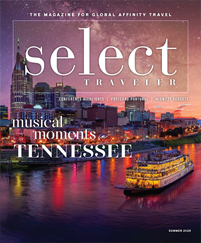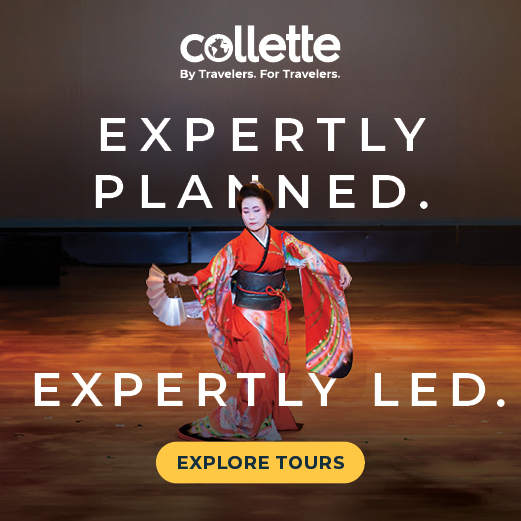Did you try promoting your travel program on social media 10 years ago only to find it unhelpful? It might be time to try again.
Use of these online platforms continues to climb, with current projections at 3.1 billion people expected to use social media in 2021. Social media and travel work well together, since the platforms encourage users to share highlights from their personal lives. As a result, many people active on Facebook or Instagram can’t resist posting a tempting pasta dish from their Italy trip or a selfie in front of the Grand Canyon.
These platforms are not just for the young. According to a 2019 PEW Research Center survey, 68% of people ages 50 to 64 years in the U.S. use Facebook, and nearly half of those 65 and older use the services. Planners can now reach these age groups on social media like never before.
To ensure that enviable photos from your tours end up in someone’s social media feed, make sure you know the best ways to engage with today’s social media users.
Pick a Platform
The three main social media platforms are Facebook, Instagram and Twitter. Some travel planners use all three to try to reach the most viewers. Most planners mainly post on Facebook for the broadest appeal, since it has the most users.
Instagram now has a large reach with the younger crowd.Statista reports that 57% of its users are between the ages of 18 and 34. Some planners trying to branch out to a younger audience keep a presence on this platform.
You can decide which of the platforms work for you with trial and error.
If dealing with Facebook, you will have to contend with the site’s mysterious algorithms that can either help you reach more viewers or hide your posts like they never happened. Some companies try to avoid this problem by asking followers to set their notifications to always see posts from their company.
One sure way to improve your algorithms is to choose engaging posts that people respond to. The more people that click “like” on your post, the more eyes Facebook will allow to see it.
Likable Posts
Planners who report the greatest success with social media don’t uses posts to sell individual trips. Instead, they use social media as a brand awareness tool.
To do this, planners think of fun, personal and interactive posts. During a trip, planners can post photos and videos from the destination in real time and tag members. Facebook even has a tool called Facebook Live to broadcast videos from your trip as you go.
Even after a trip, you can use these posts to keep your program on potential travelers’ minds. Facebook’s Memories link allows you to view posts from years ago. You can repost these on your page and help members feel nostalgia for their past travels.
Other posts not related to specific trips can include inspirational travel quotes and incorporating stories into posts, such as the backstory behind a memorable travel photo. Instead of posting a photo of a herd of elk with no caption, for instance, post with a story about the adventure leading up to finding the herd of elk. Stories are a strong way to connect with viewers that might already feel inundated with marketing messages.
Facebook prioritizes video content, so take any opportunity to post promotional videos, trip videos and videos sent from a tour operator whenever possible.
Another way to interact with followers is by posing a question. You could ask an open-ended question or narrow the results with a poll. In Facebook, you can choose a Poll option anytime you post on your page.
Loyalty travel programs can also post nontravel items that relate to the larger organization. For example, bank travel social media pages sometimes post financial tips; alumni pages frequently share news about the school.
To avoid periods of inactivity on your company’s social media page, plan a schedule for posts. Tuesday’s posts could center around upcoming trips, and Thursday’s posts could pose interesting questions.
Community Affair
Any successful travel planner will tell you that word of mouth is the most effective way to sell group travel. You can use social media to facilitate this golden marketing strategy.
These types of posts require some up-front thought to make them a regular occurrence. You can gather quotes from travelers and ask to use them as testimonials on your social media pages. Another way to plan these types of posts is to feature a member every month with a photo, a tag and a short snippet of information about the member and group trips the member has taken.
You increase your chances of members individually posting about your tours if you ask them. During the final group meal, ask them to post a few photos and tag your program’s social media page. If you arrange for the dining venue to provide free Wi-Fi for your members, that makes it even easier for them to make a quick post that reaches all their followers instantly.
Ad Targeting
If you already budget money for advertising your loyalty group travel program, consider spending some of those funds on social media. Facebook and other social media sites have ad-targeting capabilities so you can make sure the money is directing your ads towards your target demographic.
One way to do this is to create ads only for your followers. That would ensure that people who have already expressed an interest in your program would see your latest travel deal.
Another way to is to attempt to gain new potential travelers based on where they live. Known as geotargeting, this type of ad uses online information to show your ad only to a specific ZIP code. That way, a bank travel program can send out an ad to people who live close enough to the bank that they could sign up for an account and join the travel program.
Social media platforms can also frequently target users based on gender, age, interests, estimated incomes and other demographics. Planners who know what type of potential travelers they want to attract can use these filters to engage the people best suited for their tours.
Whether you opt to pay for advertising or attract viewers with interesting posts, social media offers a wide variety of options to try. In the end, staying savvy on social media depends less on picking the perfect strategy and more on continually trying different approaches to see what happens.









